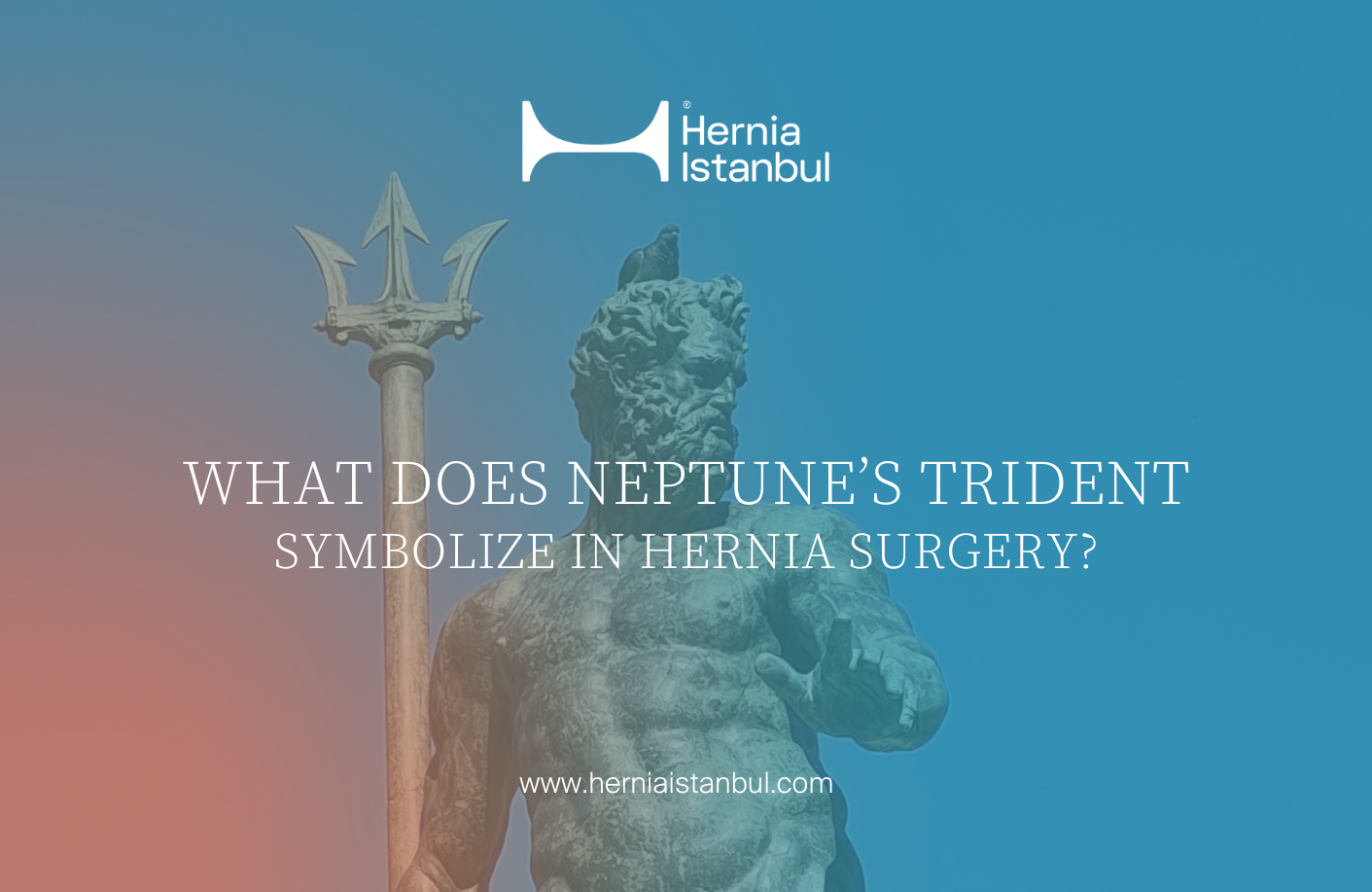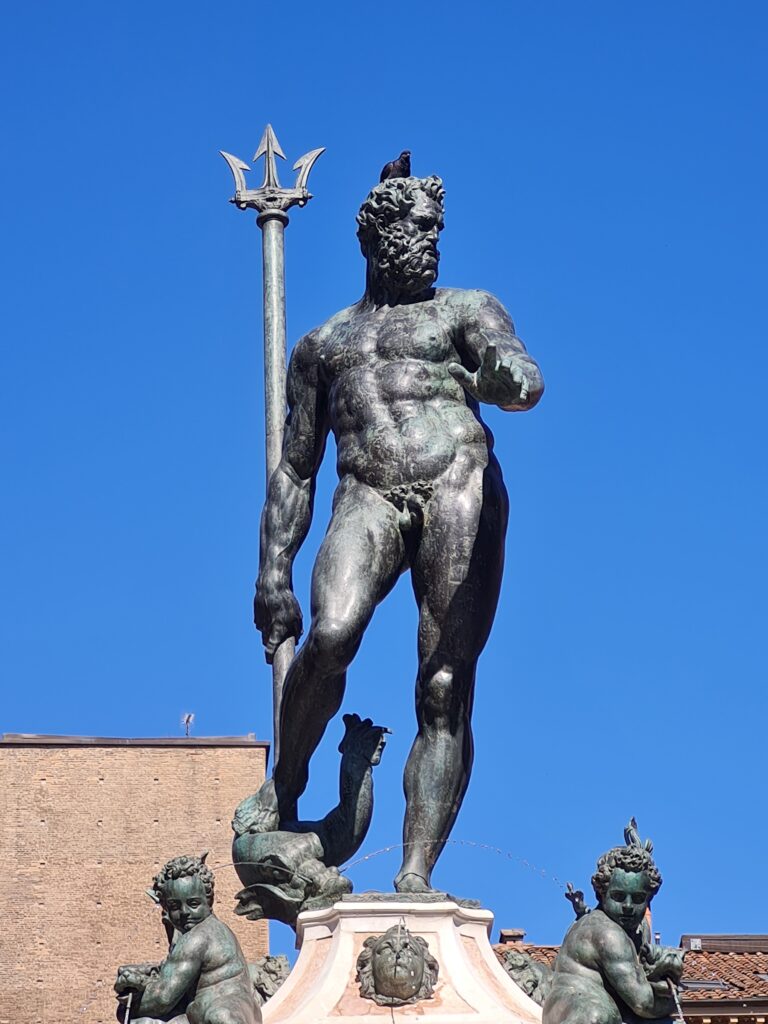
12 Jan 2025 What Does Neptune’s Trident Symbolize In Hernia Surgery?

I took this photo of the Neptune Fountain in Piazza Maggiore, Bologna, and it got me thinking about the role Neptune’s trident plays in hernia surgery. The god of the sea, Neptune, stands proudly with his iconic three-pronged trident, symbolising his power over the vast oceans and his command of nature’s forces. This powerful symbol isn’t limited to mythology, though; it extends its influence into surprising fields, including abdominal wall and hernia surgery.
Neptune, or Poseidon in Greek mythology, is known for his mastery of the seas, earthquakes, and even horses. His tthree-pronged spear called trident represents his power, control, and balance over nature – a symbol of strength and resilience. You might have noticed the trident symbol elsewhere too! For example, the famous Maserati car logo. This design, created in 1920, was inspired by Neptune’s trident at the suggestion of a family friend, perfectly capturing the car brand’s connection to power and agility, rooted in Bologna, Maserati’s hometown.
But how does this all relate to hernia surgery? Let me take you there.
In the world of abdominal wall and hernia surgery, the trident takes on a new meaning. This idea was championed by my good friend Miguel Ángel García Ureña and the ‘Madrid Group’ a team of six outstanding surgeons and friends, who are leading the way in our field. When I visited them in Madrid in November 2023, I learned about their innovative approach to complex hernia repairs, which has truly reshaped my perspective on abdominal wall surgery. Feel free to read about my experiences from that trip here!
The Madrid Group’s breakthrough discovery was made during cadaver studies, where they observed that fat along the peritoneum often arranges itself in a trident-like shape (See the image below!). They named it the ‘fatty trident’—a term instantly recognized by hernia surgeons today. This fatty trident has become a critical anatomical marker that guides us through complex repairs, helping us transition between different layers of tissue. As my friend Conrad Ballecer, a renowned abdominal wall surgeon from the U.S., often says, ‘Fat is our friend.’ And it’s true – fat acts as a guide in these surgeries, making it easier to separate layers and stay on the correct plane.
While we hernia surgeons appreciate the guidance fat provides, we know that it’s not always a patient’s friend. Obesity is a serious risk factor in hernia surgery, raising the chances of complications and recurrence. It’s also something we consider carefully when planning repairs, as excess weight can affect both the surgery and the patient’s overall health.
The Madrid Group’s fatty trident concept has greatly impacted our approach to hernia repair, offering us new insights into anatomy and a path to more precise techniques. Miguel often reminds us that ‘As we deepen our knowledge of abdominal wall anatomy, new techniques are always waiting to be discovered in hernia surgery.’ And he’s right – understanding the fatty trident is essential for every hernia surgeon, as it brings us one step closer to achieving the best possible outcomes for our patients.
It’s inspiring to see how the ancient symbol of Neptune’s trident has taken on fresh meaning in modern hernia surgery, helping us navigate the intricate layers of abdominal wall anatomy.

Peritoneal fat distribution – Image courtesy of Miguel Ángel García Ureña